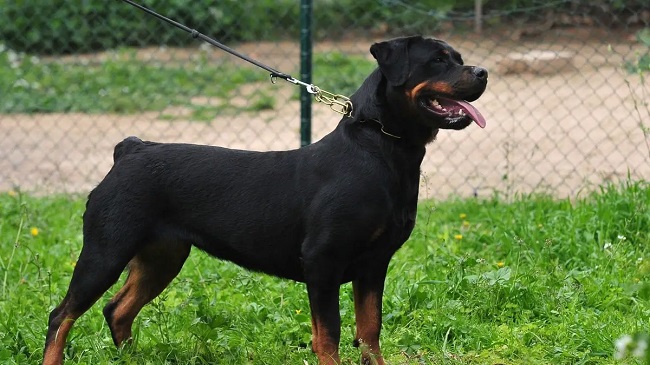The docked tail has long been associated with Rottweilers, raising questions about the reasons behind this practice and its implications.
In this comprehensive guide, we explore the subject of Rottweiler tail docking, discussing the reasons for docking, the differences between Rottweilers with and without tails, the potential harm involved, the legal aspects, and important factors to consider when making a decision about your Rottweiler’s tail.

What Are Rottweilers Born With Tails?
Rottweilers are born with tails, just like most other dog breeds. Their tails are typically long and undocked. Docking involves the surgical removal of a portion of the tail, usually done when the puppies are very young.
Read Also:
Rottweiler With Tail vs Without
Rottweilers with tails exhibit a natural appearance, as their tails are allowed to grow to their full length. Tails can be expressive, aiding in communication and balance.
On the other hand, docked Rottweilers have a shortened tail that is more aligned with breed standards and historical traditions. This aesthetic choice often influences whether or not owners decide to dock their Rottweiler’s tail.
Does Docking a Rottweiler’s Tail Hurt?
Tail docking involves a surgical procedure, which can cause pain and discomfort for the puppy. The process typically involves the removal of a portion of the tail, often without anesthesia.
While the pain experienced can vary, it is important to note that any surgical procedure carries risks and potential discomfort for the animal.
Is It Legal to Dock a Rottweiler’s Tail?
The legality of tail docking varies by country and jurisdiction. In many regions, including several European countries, tail docking is considered illegal except for specific medical reasons.
However, in some areas, it is still legal for certain breeds, including Rottweilers, for the purpose of conforming to breed standards or traditions. Familiarize yourself with the laws and regulations in your specific location before making a decision.
Should I Dock My Rottweiler’s Tail?
The decision to dock a Rottweiler’s tail is a personal and often controversial one. It is essential to consider multiple factors, including the breed standard, potential health benefits or risks, ethical concerns, and legal requirements.
Some owners choose not to dock their Rottweiler’s tail, as they prioritize their dog’s natural appearance and well-being.
Health and Behavioral Considerations
While historical reasons and breed standards have influenced tail docking, recent studies suggest that there are no significant health benefits associated with the practice.
Tails serve various purposes, including balance and communication, and removing them may affect a dog’s natural behavior and communication signals. It is important to evaluate these factors when considering tail docking.
Alternatives and Care for an Undocked Tail
If you choose not to dock your Rottweiler’s tail, proper care and grooming are necessary. Regular cleaning, ensuring the tail is free from matting and debris, and trimming the hair around the area are important for maintaining hygiene and preventing discomfort or infections.
Read Also:
Conclusion
The decision to dock a Rottweiler’s tail is a complex and personal one, influenced by a variety of factors including breed standards, historical traditions, ethical considerations, and legal requirements.
While tail docking has been a long-standing practice for Rottweilers, recent shifts in attitudes and regulations have prompted many owners to opt against the procedure.
Ultimately, it is important to consider the well-being and natural characteristics of your Rottweiler when making a decision about tail docking, keeping in mind the potential discomfort and ethical implications associated with the procedure.
























